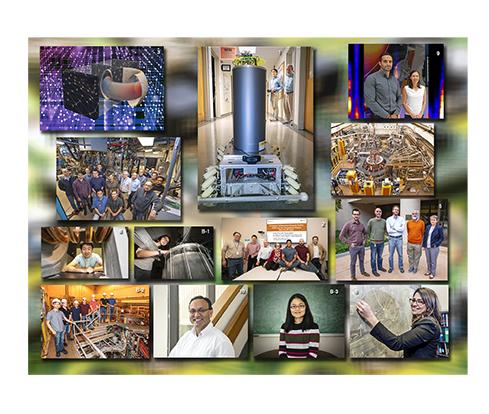
Credit: Elle Starkman / PPPL Office of Communications
Arms control robots, a new national facility, and accelerating the drive to bring the fusion energy that powers the sun and stars to Earth. These far-reaching achievements at the U.S. Department of Energy’s (DOE) Princeton Plasma Physics Laboratory (PPPL) made 2019 another remarkable year. Research at the only national laboratory devoted to fusion and plasma physics — the state of matter that makes up 99 percent of the visible universe — broke new ground in varied fields as vast as astrophysics and as tiny as nanotechnology. Here in no particular order, in case you missed them, are 10 must-read stories that capture an example of the full range of research and development during the past year at the Laboratory — plus three bonus stories highlighting a first-generation college student, an award-winning apprenticeship program, and creation of a supersonic plasma jet that could facilitate the study of stellar bodies light years away to help gain an understanding of our universe.
- Find that nuclear warhead! PPPL develops and successfully tests the prototype for a swarm or robots that can detect neutrons, even when hidden, to help in arms control efforts.
- High excitement for low-temperature plasma. The Laboratory teams with Princeton University to become home to a nationwide center to study a dynamic form of plasma in low temperatures, not the extremely high temperatures required for fusion reactions.
- Artificial intelligence transforms scientific inquiry. The rapidly expanding branch of computer science speeds the development of fusion energy.
- Spherical tokamaks as models for next-generation fusion facilities. A close look today at new options for tomorrow’s power plants that will use fusion to provide energy.
- Joining forces with private industry. The Laboratory houses a branch of a national program to enhance the harnessing of fusion energy, making a powerful public-private partnership.
- A novel way to launch fusion reactions. PPPL scientists confirm a viable alternative to a widely used standard method.
- All fired up and ready to go. The Laboratory powers up an upgrade of the Lithium Tokamak Experment (LTX) — now called the LTX-β — to test the ability of lithium metal to facilitate fusion reactions.
- Streamlining designs of a different type of fusion device. PPPL physicist develops a technique to simplify development of complex stellarators — the type of device created and envisioned by the Lab’s founder, Lyman Spitzer — to produce stable fusion plasmas.
- Surprise! Researcher discovers turbulence is not all bad. Discovery demonstrates that eddies and currents that disturb the plasma that fuels fusion reactions may also be beneficial.
- Smoothing the operation of fusion facilities. PPPL world-renowned expert is named co-leader of national program on the use of liquid metal components in future fusion devices.
Bonus 1. First-generation college student. Physics major Barbara Garcia pursues fresh ideas as a summer intern at PPPL.
Bonus 2. Apprentices alight. Award-winning program gives early career technicians the chance to learn high-tech skills.
Bonus 3. From the Lab to deep space. Development of plasma jets opens a new chapter in studying the stars.
###
PPPL, on Princeton University’s Forrestal Campus in Plainsboro, N.J., is devoted to creating new knowledge about the physics of plasmas — ultra-hot, charged gases — and to developing practical solutions for the creation of fusion energy. The Laboratory is managed by the University for the U.S. Department of Energy’s Office of Science, which is the single largest supporter of basic research in the physical sciences in the United States and is working to address some of the most pressing challenges of our time. For more information, visit energy.gov/science.
Media Contact
John Greenwald
[email protected]
609-243-2672
Original Source
https:/




